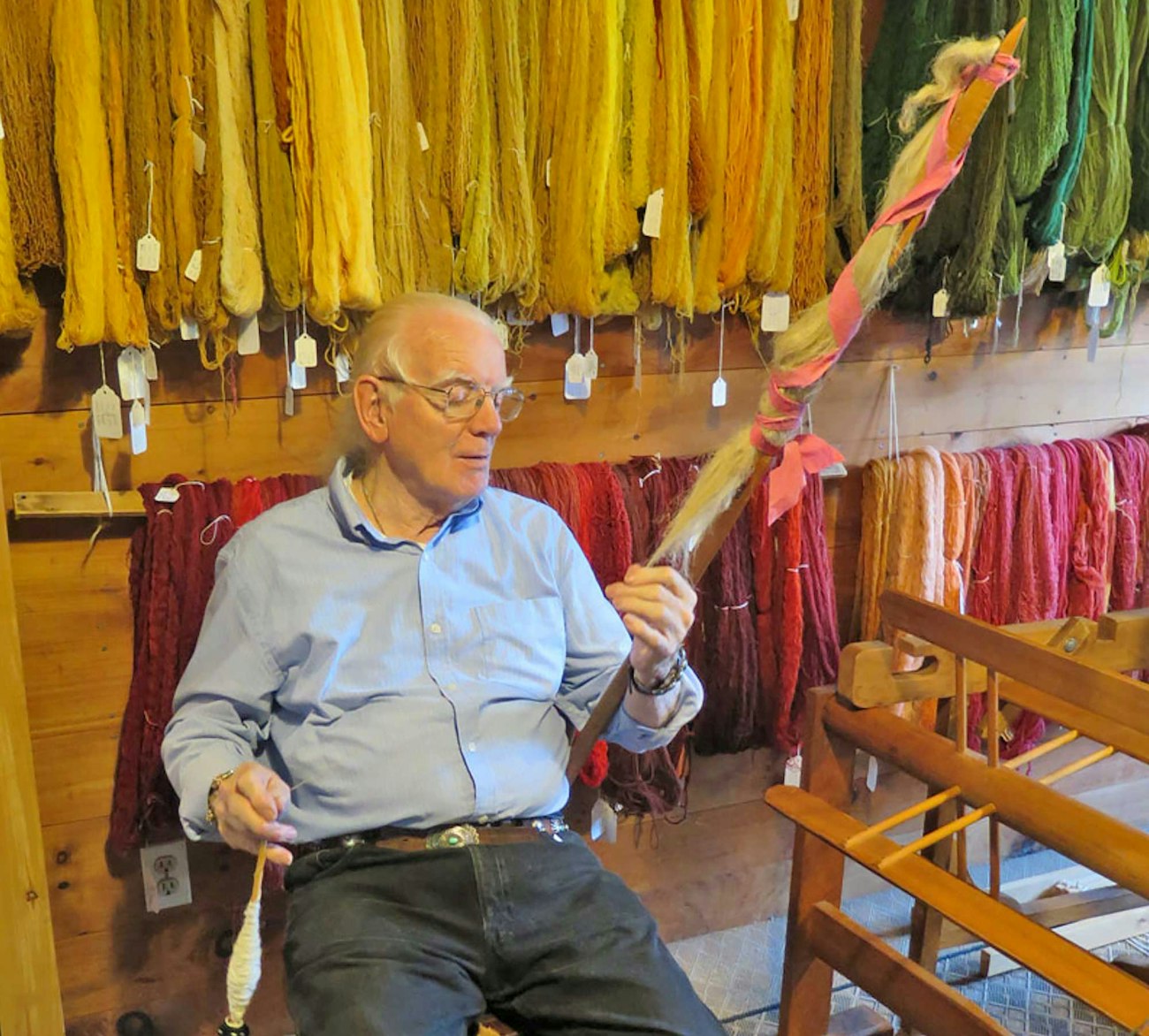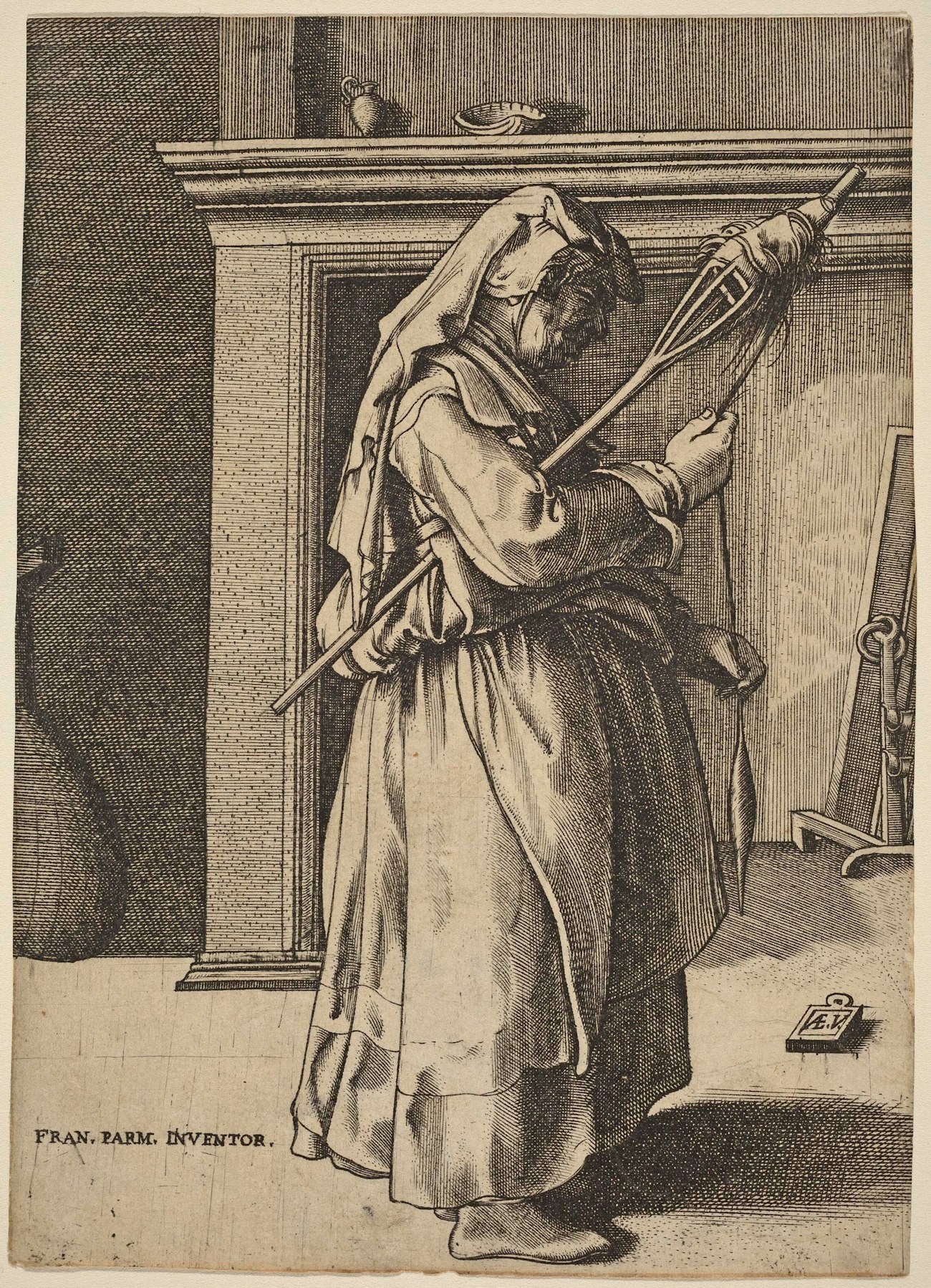Even though spinning saints are less well known than weaving deities—the weaver Athena is more famous than the spinner Clotho, for example—we spinners have our patron saints. And so we celebrate Saint Distaff’s Day on January 7, the day after Epiphany.
But there’s one problem: there’s no such person as Saint Distaff.
Saint Distaff’s Day (also known as Distaff Day, Roc Day, or Rock Day) is the day when spinners traditionally resumed work after all Christmas festivities had ceased on the Twelfth Night (January 6). Most of what we know about Saint Distaff’s Day comes from a poem called “Saint Distaff’s Day, or the Morrow After Twelfth Day,” by Robert Herrick from his 1648 book Hesperides.
 Norman Kennedy spins flax with a distaff tucked in his belt and a spindle held in his hand. Photo by Bruce Engebretson
Norman Kennedy spins flax with a distaff tucked in his belt and a spindle held in his hand. Photo by Bruce Engebretson
What’s a distaff?
A distaff is a tool used to hold fiber so that the spinner can easily reach it or keep it out of the way. See Spin Off contributor Kim Caulfield demonstrate how to load and spin from a distaff. Distaffs are less common today than in centuries past, when most flax-spinning wheels had an attached distaff. You can still see them, though. Some distaffs you wear: a distaff may be a metal bracelet, a knitted cuff, or a shaft with a ring for your finger. Yet others you tuck in your waistband, leaving both hands free, like Norman Kennedy does.
 Kim Caulfield demonstrates how to load fiber to a distaff. Photo by George Boe
Kim Caulfield demonstrates how to load fiber to a distaff. Photo by George Boe
Some modern spinning wheels (such as the Ashford Traditional and Kromski Minstrel) still have optional distaff attachments. Distaffs most commonly hold flax, but Norman Kennedy demonstrates how to spin wool on a distaff in his workshop, From Wool to Waulking.
 Engraving of Old Woman with a Distaff by Enea Vico after Parmigianino. Courtesy of the National Gallery of Art, Gift of W.G. Russell Allen
Engraving of Old Woman with a Distaff by Enea Vico after Parmigianino. Courtesy of the National Gallery of Art, Gift of W.G. Russell Allen
What’s a roc?
Saint Distaff’s Day may also be called Rock Day or Roc Day. In several Northern European languages, “roc” or “rok” means “distaff.” To be even more confusing, Saint Distaff’s Day may also fall on Old Rock Day, January 7, which celebrates fossils.
Anne Merrow is Editorial Director and a co-founder of Long Thread Media.
Originally published January 2, 2018; updated January 7, 2021; updated January 8, 2024.

